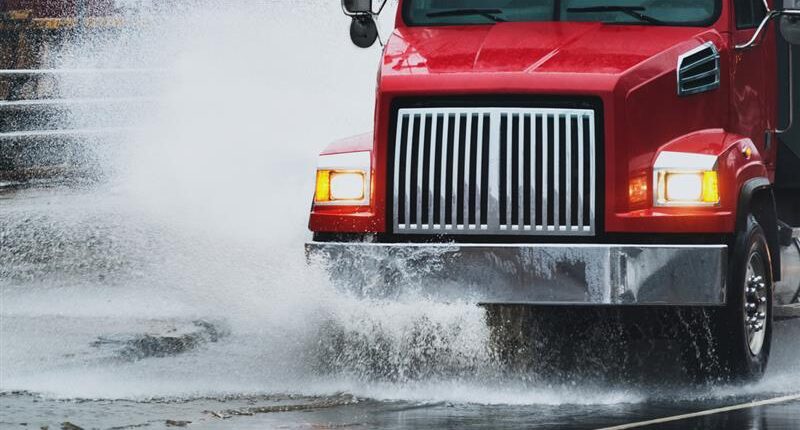In the trucking industry, disaster preparedness is not just a mere checklist item; it’s a crucial aspect of operational resilience. Natural disasters, economic fluctuations and other unexpected incidents can disrupt the flow of business and impact your fleet significantly. As a fleet owner, being proactive and prepared can save time, money and even lives. Here’s a comprehensive guide to help you develop a robust disaster preparedness plan for your trucking fleet.
1. Assess Risks and Vulnerabilities
The first step in disaster preparedness is understanding the specific risks your fleet may face. Consider the following:
- Geographic Location: Analyze the likelihood of natural disasters like hurricanes, floods, earthquakes and wildfires in your operational area.
- Operational Factors: Consider potential disruptions from traffic accidents, mechanical failures or logistic challenges.
- Regulatory Changes: Stay updated on regulations impacting your operations during emergencies.
2. Develop a Comprehensive Emergency Plan
A well-structured emergency plan is essential for your fleet’s preparedness. Your plan should include:
- Communication Protocols: Establish clear communication channels for drivers, dispatchers and support teams. Ensure that everyone knows how to report incidents and receive critical updates.
- Evacuation Procedures: Outline steps for safely evacuating vehicles and personnel during a disaster. This includes identifying safe zones and alternative routes.
- Supply Chain Contingencies: Create backup plans with alternative suppliers and routes to maintain operations during disruptions.
3. Invest in Training and Drills
Regular training sessions and emergency drills are vital for ensuring that your team knows how to respond effectively during a disaster. Consider the following:
- Safety Training: Provide training on safety protocols, first aid and emergency response.
- Simulation Drills: Conduct drills that simulate various disaster scenarios to familiarize your team with the emergency plan and improve response times.
4. Implement Technology Solutions
Utilizing technology can enhance your fleet’s disaster preparedness. Explore the following tools:
- GPS Tracking Systems: These can help monitor fleet movements and provide real-time updates during emergencies.
- Telematics: Implement telematics systems to gather data on vehicle performance and driver behavior, enabling proactive maintenance and risk management.
- Communication Apps: Use mobile apps that allow drivers to stay connected and receive critical updates, even in remote areas.
5. Establish a Recovery Plan
After a disaster strikes, a recovery plan is essential for getting your fleet back on the road quickly. Key components include:
- Post-Disaster Assessment: Conduct a thorough assessment of damages to vehicles, equipment and facilities.
- Insurance and Financial Planning: Ensure you have adequate insurance coverage and a financial plan to manage recovery costs. Keep important documents accessible and organized.
- Mental Health Support: Consider the emotional impact of disasters on your team. Providing mental health resources can help employees cope with the aftermath.
6. Engage with Local Authorities and Communities
Building relationships with local emergency services and community organizations can facilitate a more effective response during disasters. Consider the following:
- Collaborate with Authorities: Establish connections with local law enforcement and emergency management agencies to stay informed about disaster preparedness initiatives in your area.
- Community Involvement: Participate in local disaster preparedness events and training sessions to enhance your fleet’s readiness and contribute to community resilience.
As a fleet owner, disaster preparedness is not just a responsibility; it’s a commitment to safeguarding your team, assets and operations. By assessing risks, developing comprehensive plans, investing in training, leveraging technology and engaging with local authorities, you can create a resilient fleet ready to navigate any challenge. Remember, the time to prepare is now—don’t wait for a disaster to strike.
If you want to learn more about how TVC Pro-Driver can help protect your organization’s bottom line and boost your safety culture, contact us at sales@prodriver.com.













